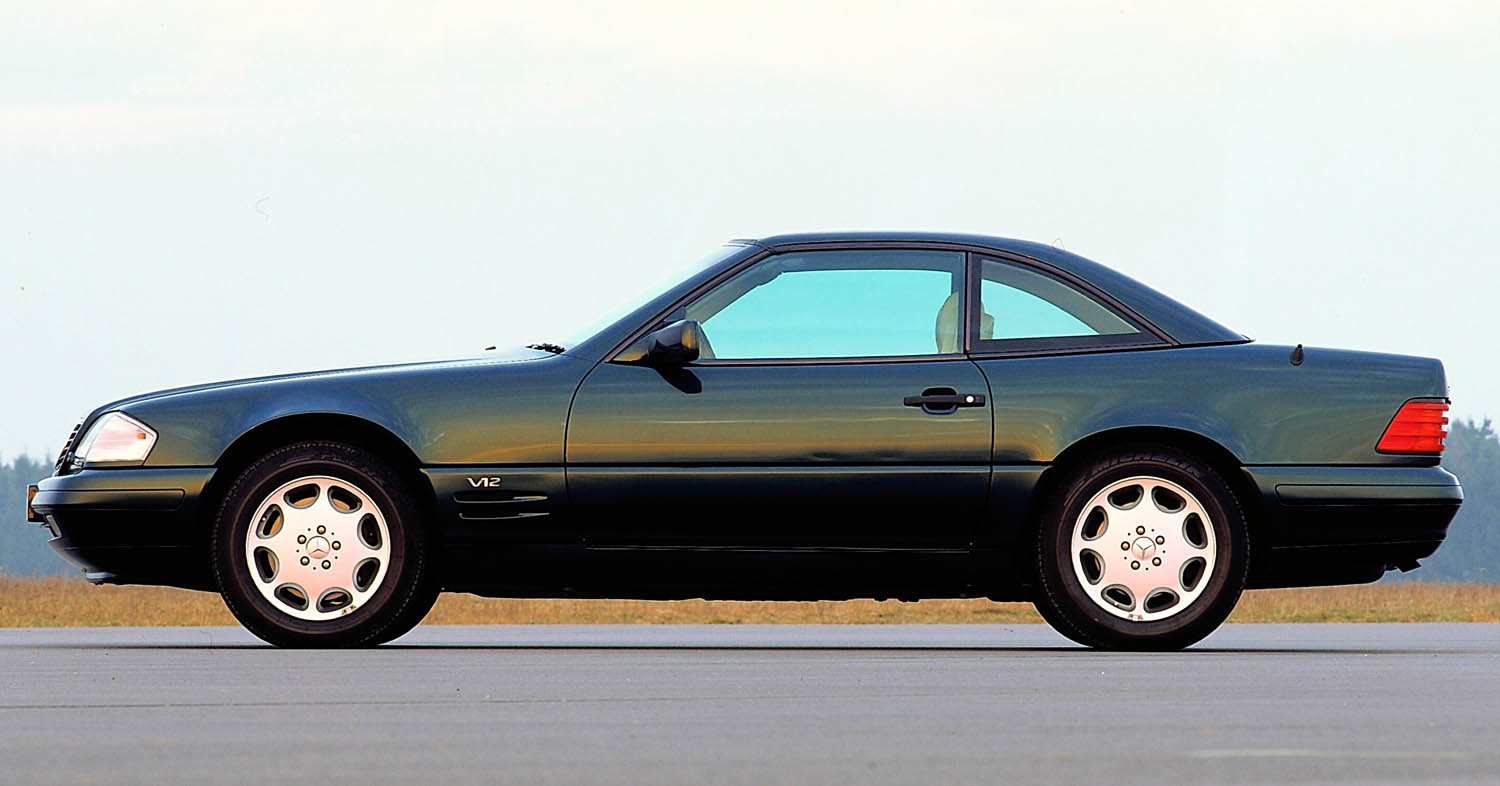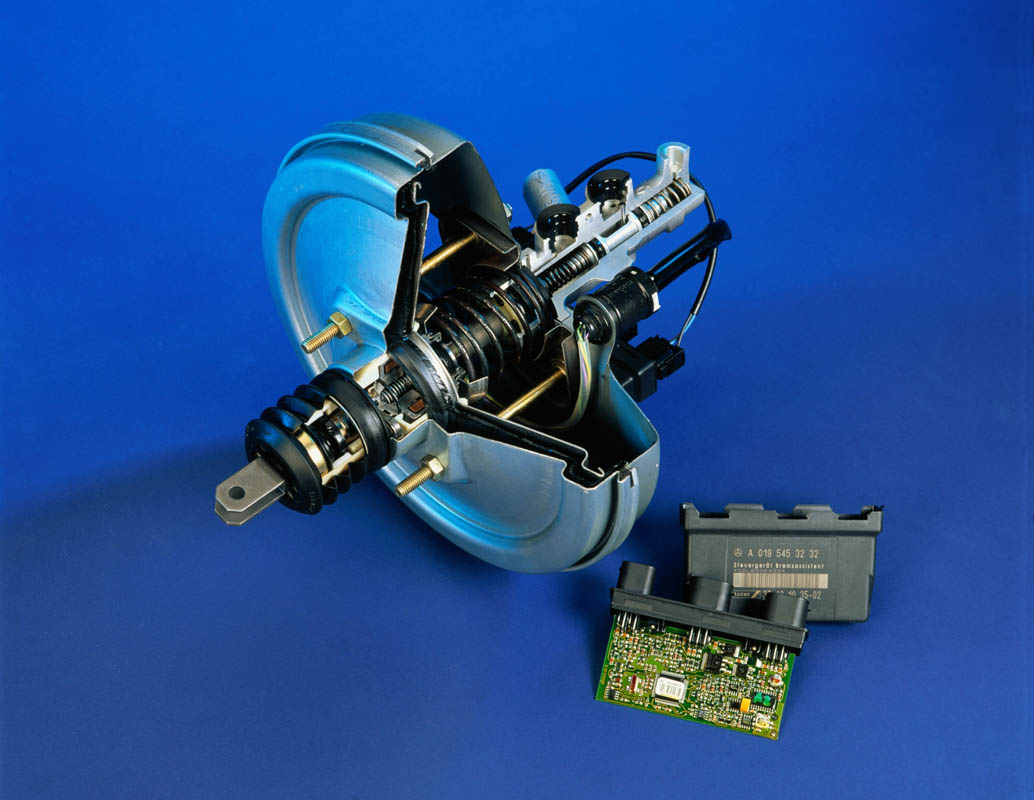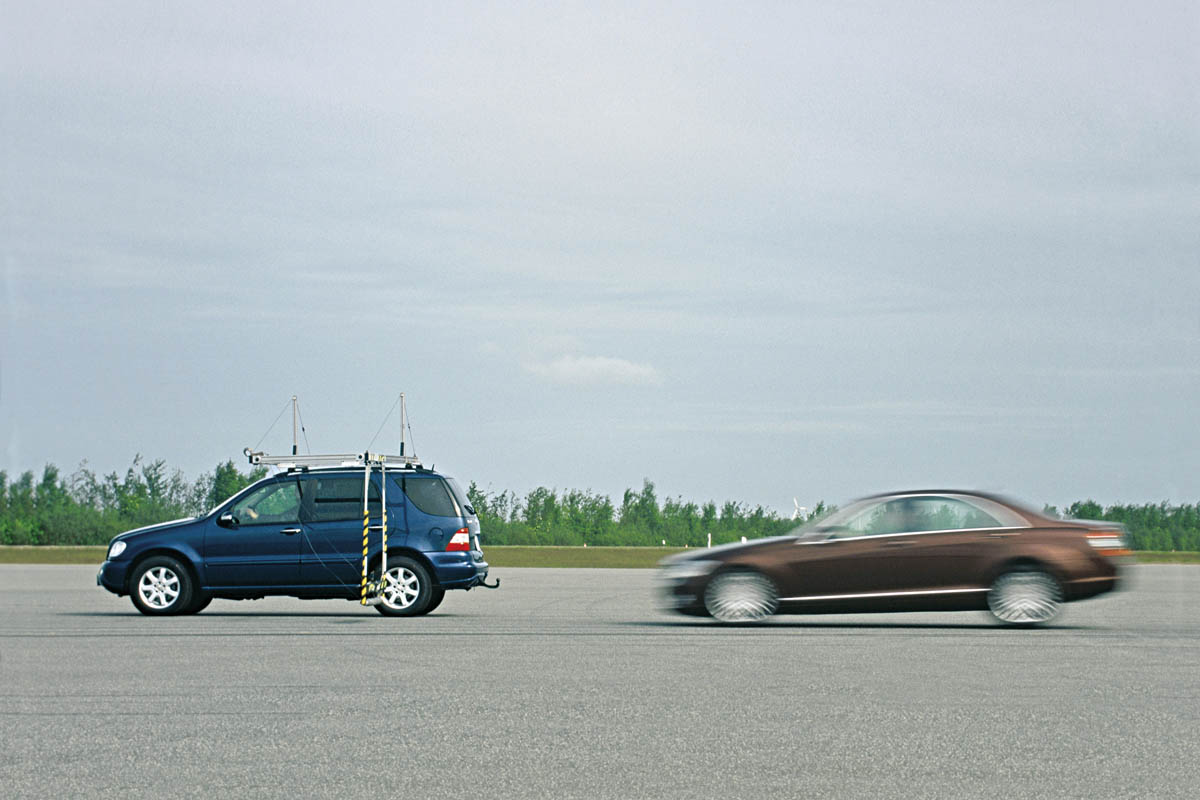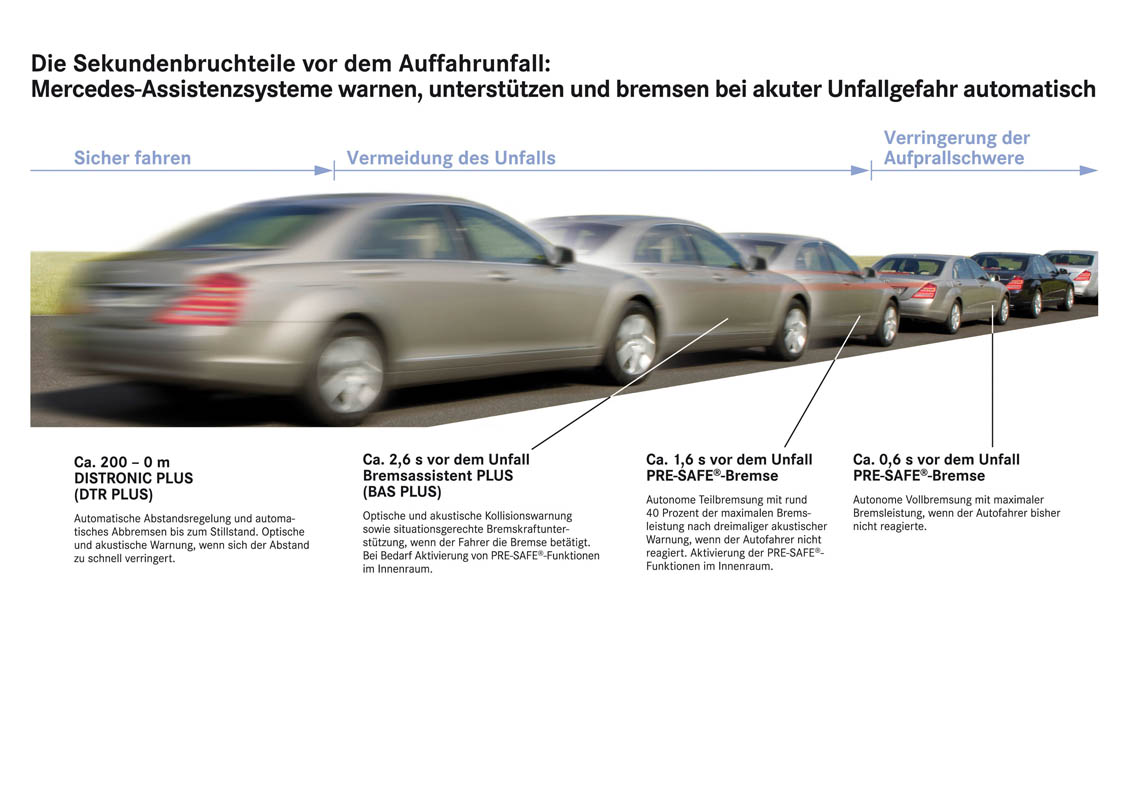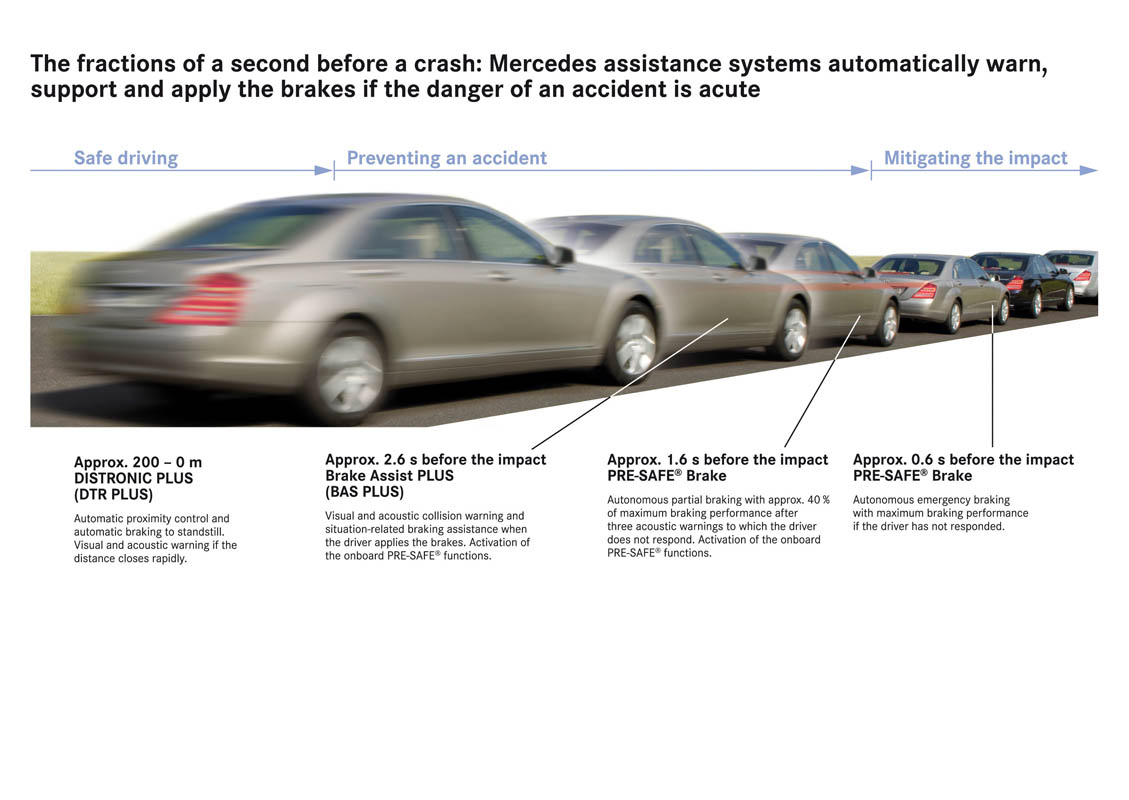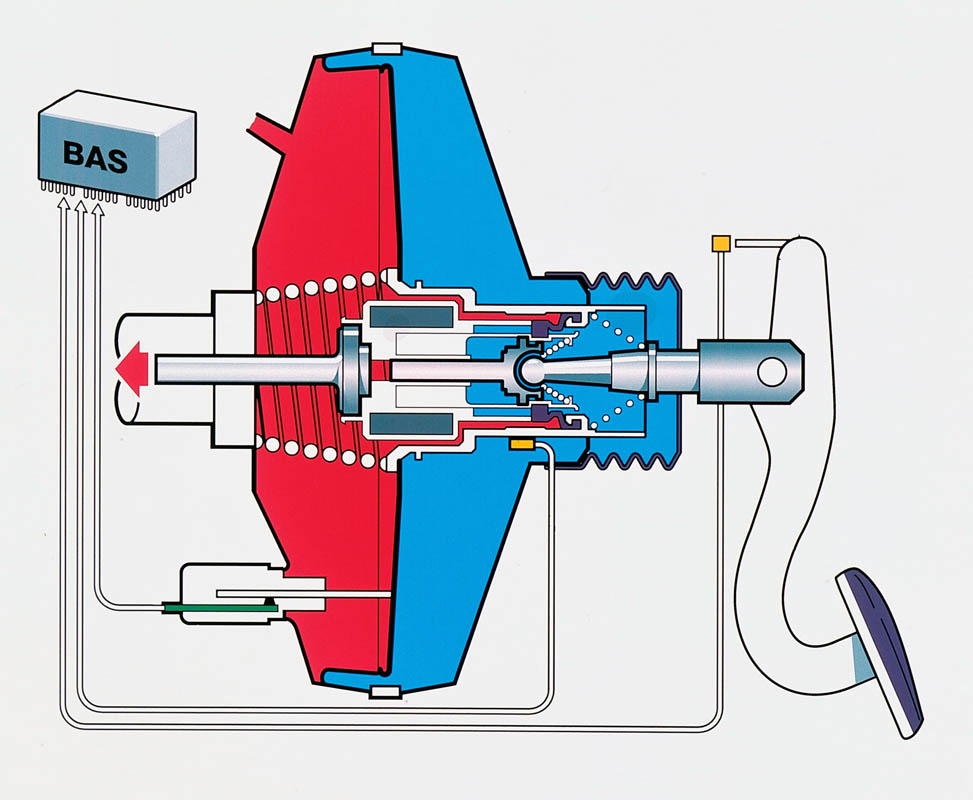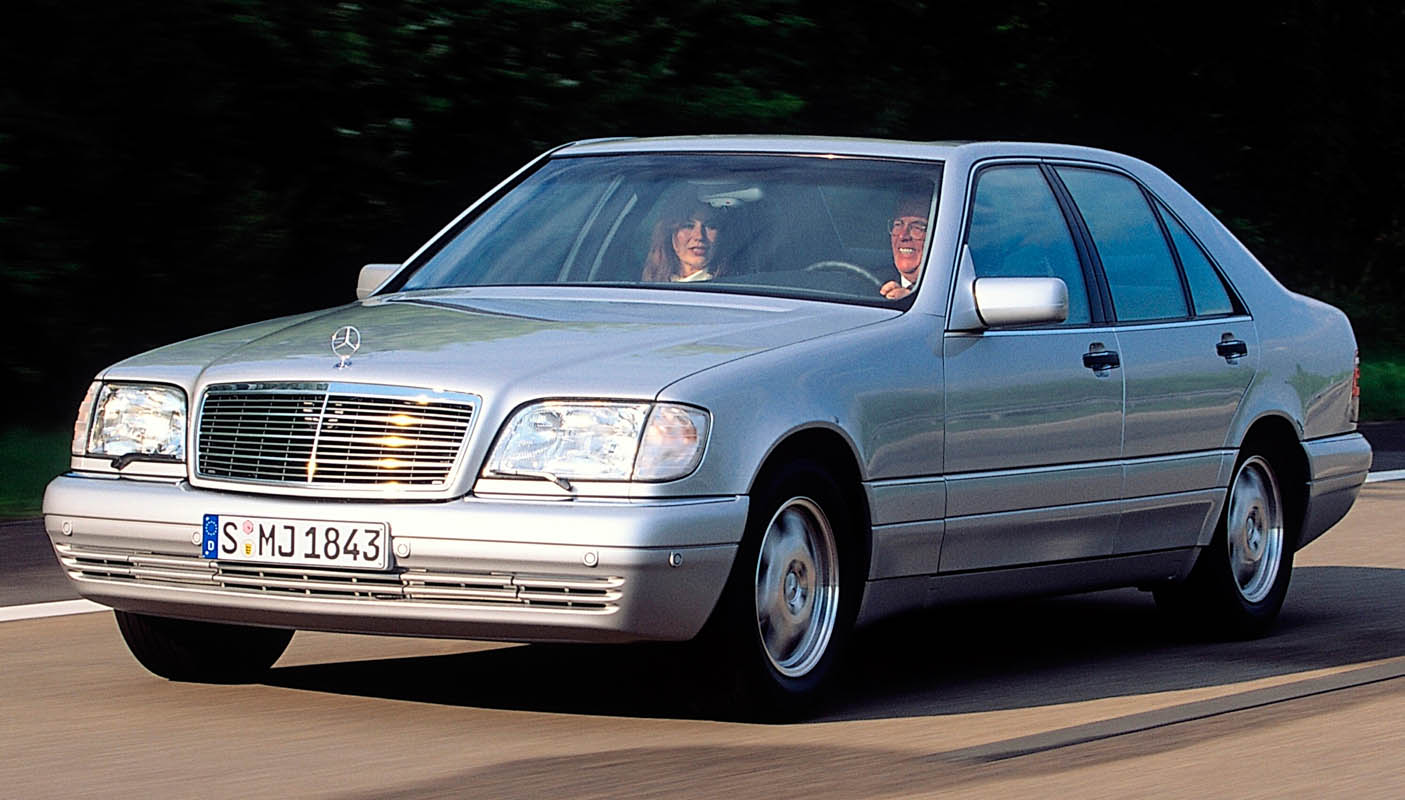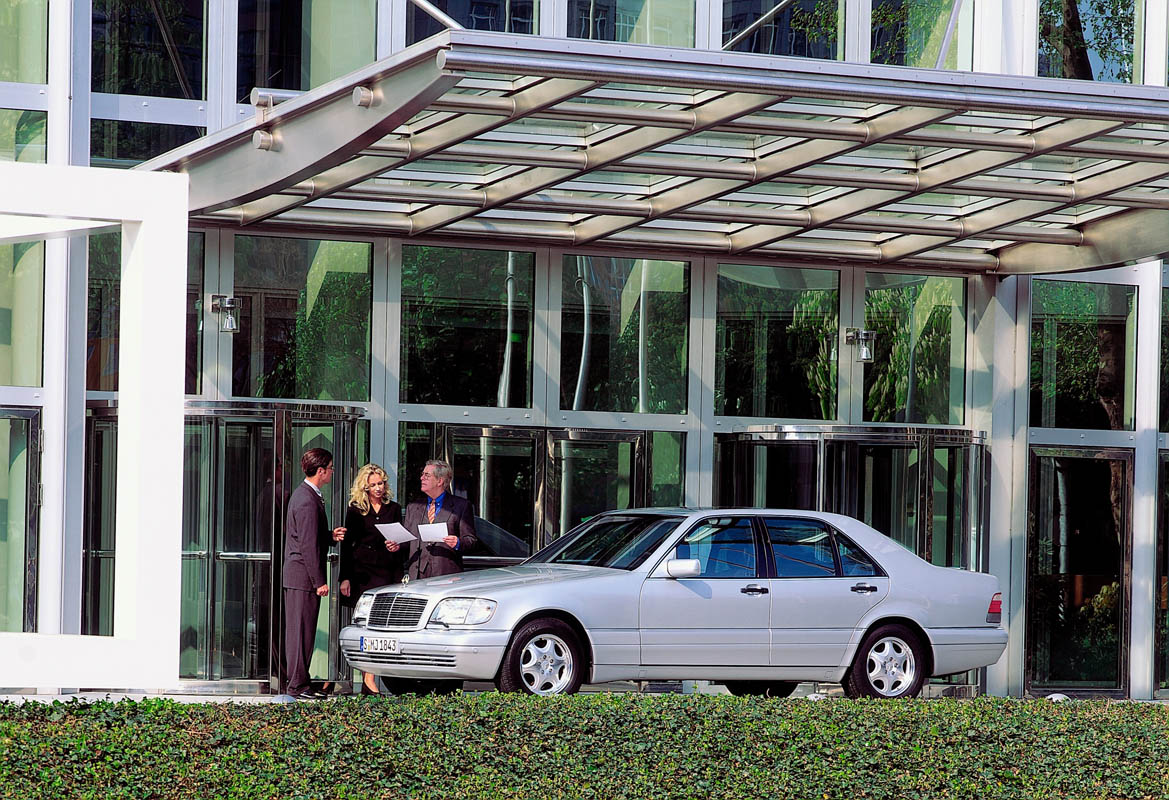
Emergency braking can save lives. However, many drivers then step on the brake pedal quickly but not forcefully enough – this is what Mercedes-Benz engineers discovered in the early 1990s during tests in the company’s own driving simulator. Their answer was the brake assistant BAS, also called “Brake Assist System”. The brand presented it on 25 November 1996. BAS was considered one of the key links in the chain of important Mercedes-Benz safety developments.
From December 1996, Brake Assist was standard equipment, initially in the S-Class (model series 140) and SL (R 129). The other model series also gradually received the assistance system. Its mode of operation: the BAS interpreted a certain speed at which the brake pedal is depressed as an emergency situation and built up maximum brake boost within fractions of a second. This significantly shortened the braking distance – at 100 km/h on dry roads, for example, by up to 45 per cent. Mercedes-Benz investigated its effect in the driving simulator: Brake Assist was able to mitigate or even prevent rear-end collisions. And it made an effective contribution to pedestrian protection. In a series of experiments, 55 car drivers drove through a town at 50 km/h when suddenly a child ran onto the carriageway. Only full braking prevented the accident.
Just how far system networking had already progressed at that time was shown by the fact that Brake Assist worked with data from the ABS anti-lock braking system – as did the ASR traction control system, the ASD automatic limited-slip differential, the ESP® Electronic Stability Program, the electronically controlled automatic transmission, the DISTRONIC proximity control system and many more. Depending on the function and task, further sensors and controls were also used. The control electronics of ABS, ESP®, BAS and ASR were combined in one control unit.
Another example of networking: in the premiere year of Brake Assist, other Mercedes-Benz safety developers were already working on the PRE-SAFE preventive occupant protection system® This used the BAS information that an accident situation was imminent as one of several indicators: immediately PRE-SAFE® prepared the interior for a possible collision by, among other things, adjusting the seat backrests for optimum belt effectiveness and closing the sunroof. PRE-SAFE® celebrated its premiere in the 220 model series S-Class in 2002. The integrated system finally put an end to the previously common separate consideration of active and passive safety.
Additional functions for the BAS Brake Assist System
The next BAS feature arrived seven years later: in the 221 model series S-Class unveiled in 2005, Mercedes-Benz expanded Brake Assist into an anticipatory system that supported the driver even more effectively than before in critical situations. Radar technology made this possible: it detected the distance to preceding cars, warned the driver of insufficient distance and calculated the necessary braking assistance in the event of an imminent collision. If traffic came to a standstill and the driver actually had to step on the brake pedal, Brake Assist PLUS built up the brake pressure calculated for the respective situation in a flash. BAS PLUS used two radar systems: a newly developed 24-gigahertz short-range radar detected the surroundings in front of the vehicle with an aperture angle of 80 degrees and a range of 30 metres. In addition, the 77-gigahertz radar of DISTRONIC scanned three lanes of a motorway up to a distance of 150 metres with an aperture angle of nine degrees. And again, the developers tested the system in the driving simulator. The results were impressive: while the accident rate in tests with conventional braking technology was 44 per cent on average, it dropped by three quarters with the help of Brake Assist PLUS.
The development continued apace. In 2006, pioneering technical innovations such as Active Night View Assist and the further developed DISTRONIC PLUS proximity control system as well as the BAS PLUS Brake Assist System were combined to form PRE-SAFE® Brake with autonomous partial braking. Mercedes-Benz also offered similarly networked systems for its commercial vehicles, e.g. Active Brake Assist in the Actros heavy-duty truck. PRE-SAFE® Brake received pedestrian detection in 2013, BAS PLUS also received Cross-Traffic Assist. PRE-SAFE® Brake is now called Active Brake Assist, is standard equipment and reacts to cars, cyclists and pedestrians with autonomous emergency braking if the driver does not intervene.
And today? Braking systems remain essential for road safety. In addition, emergency braking systems triggered on the basis of detecting the surroundings are an important foundation for highly automated vehicles and thus an essential part of the vision of accident-free driving.
